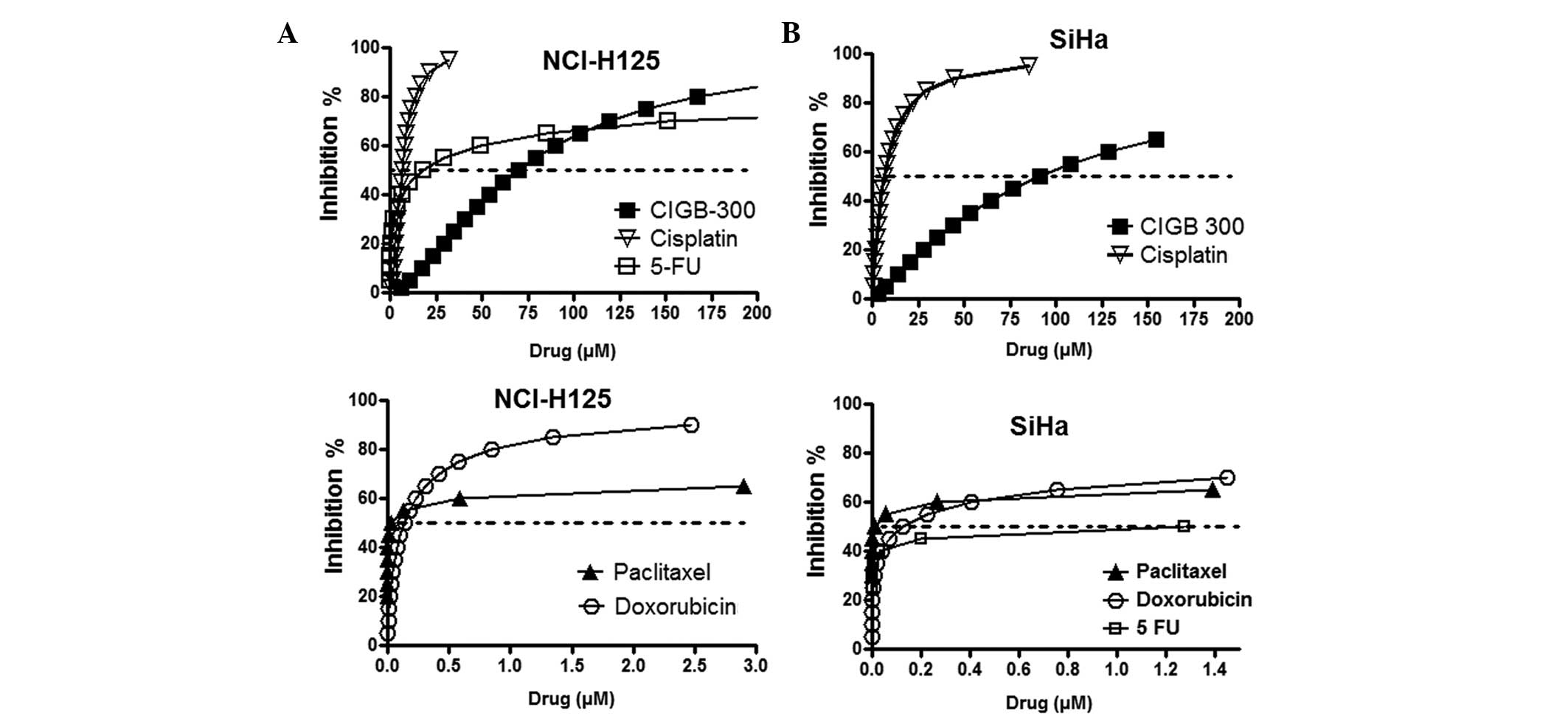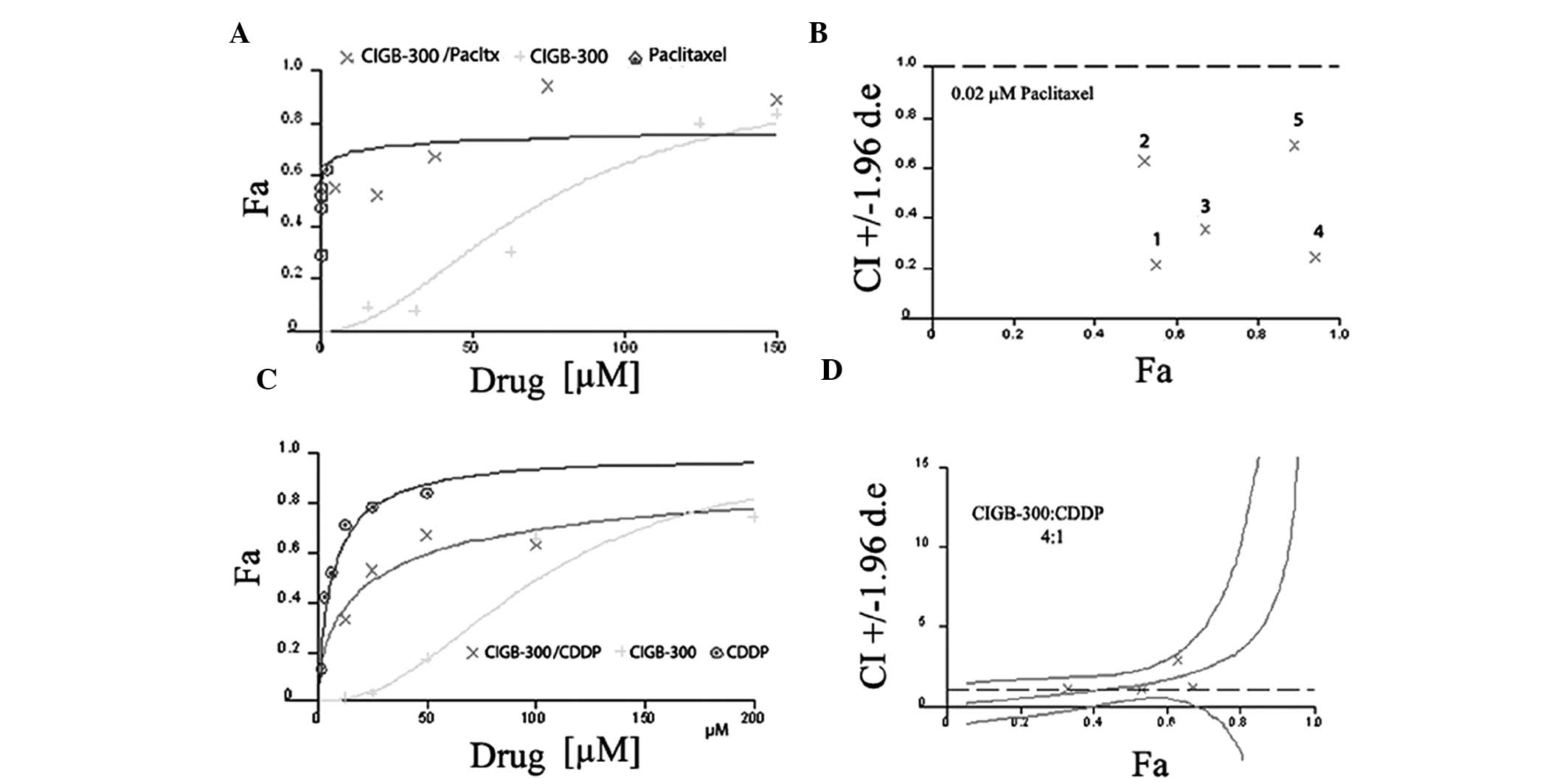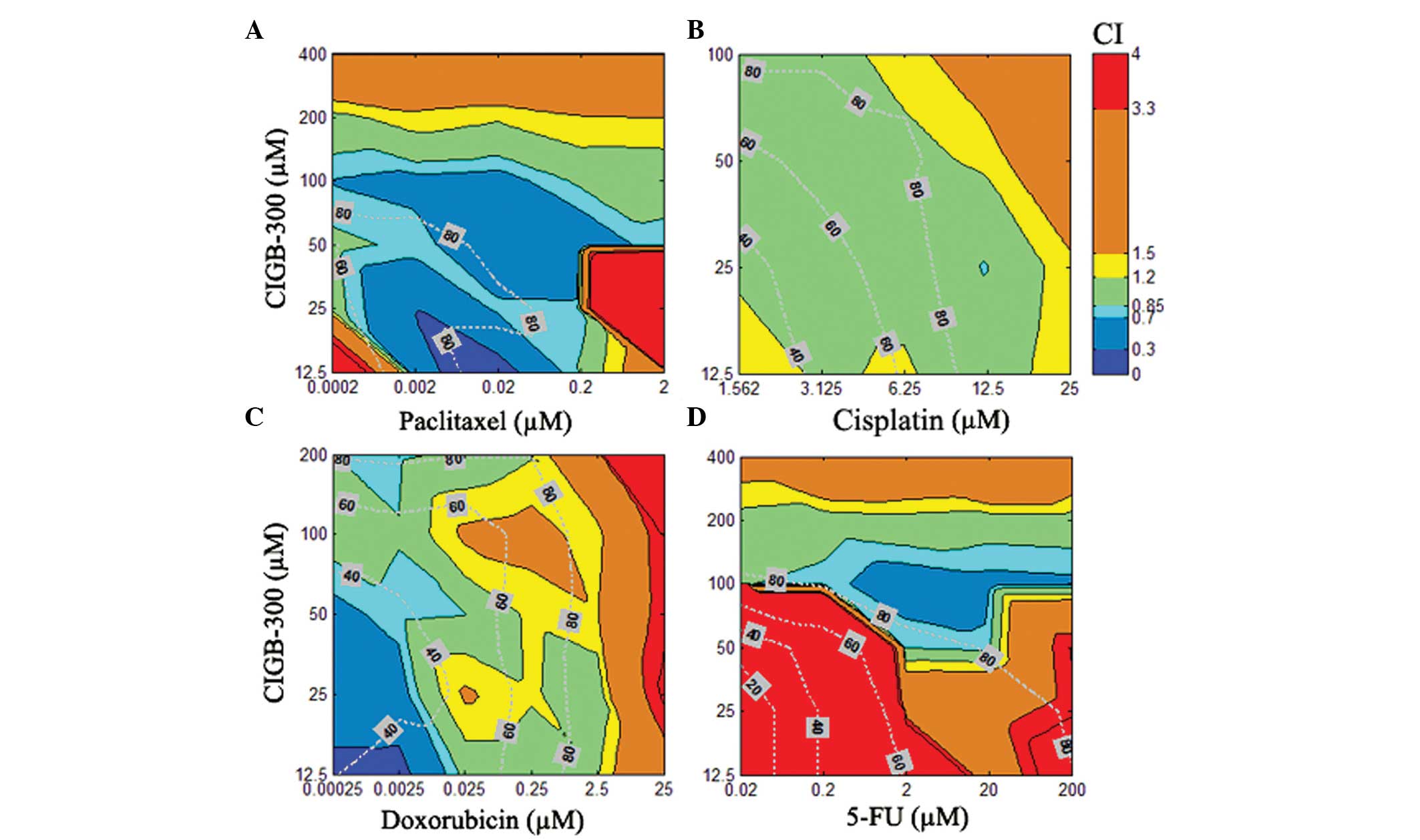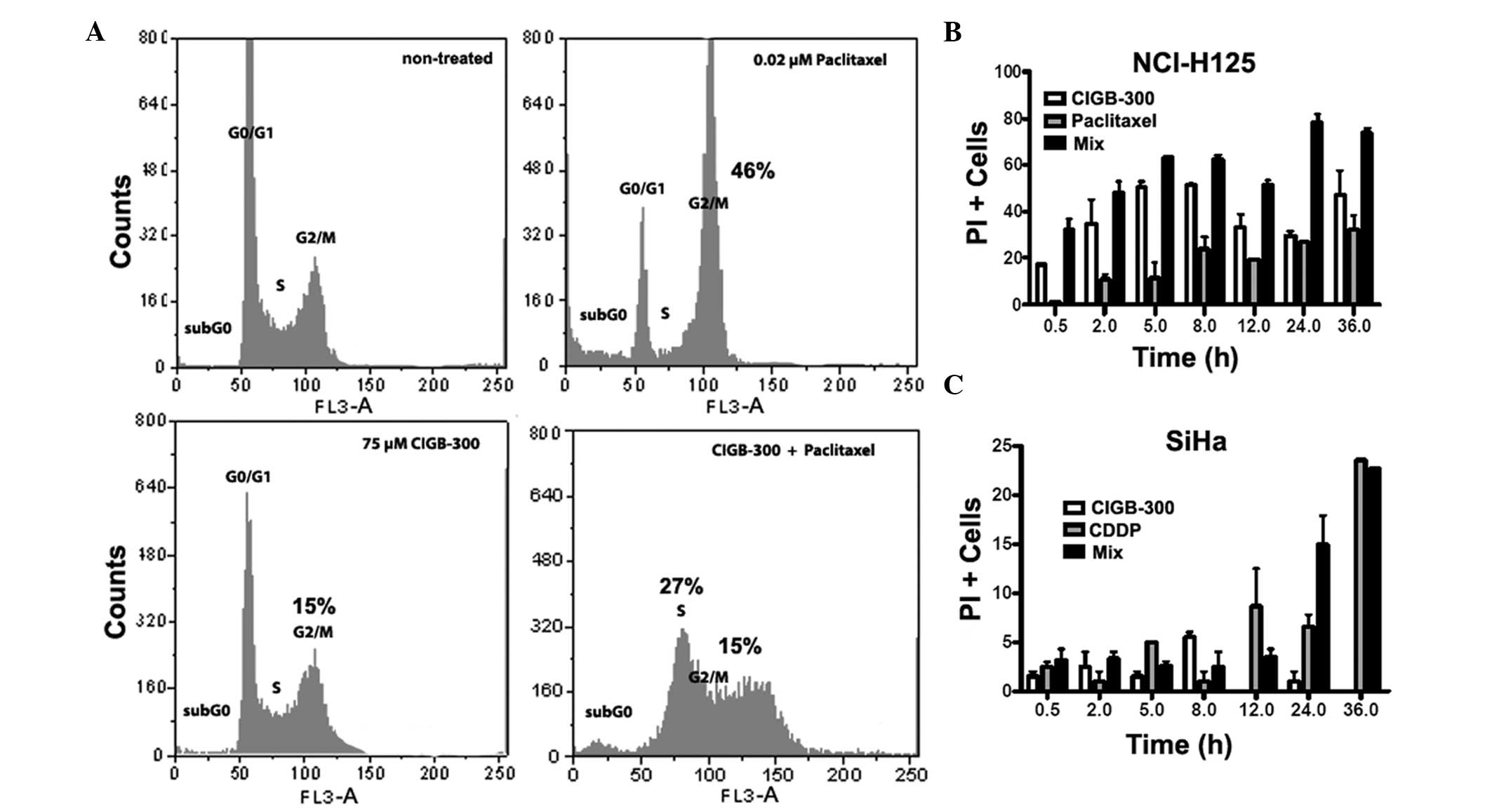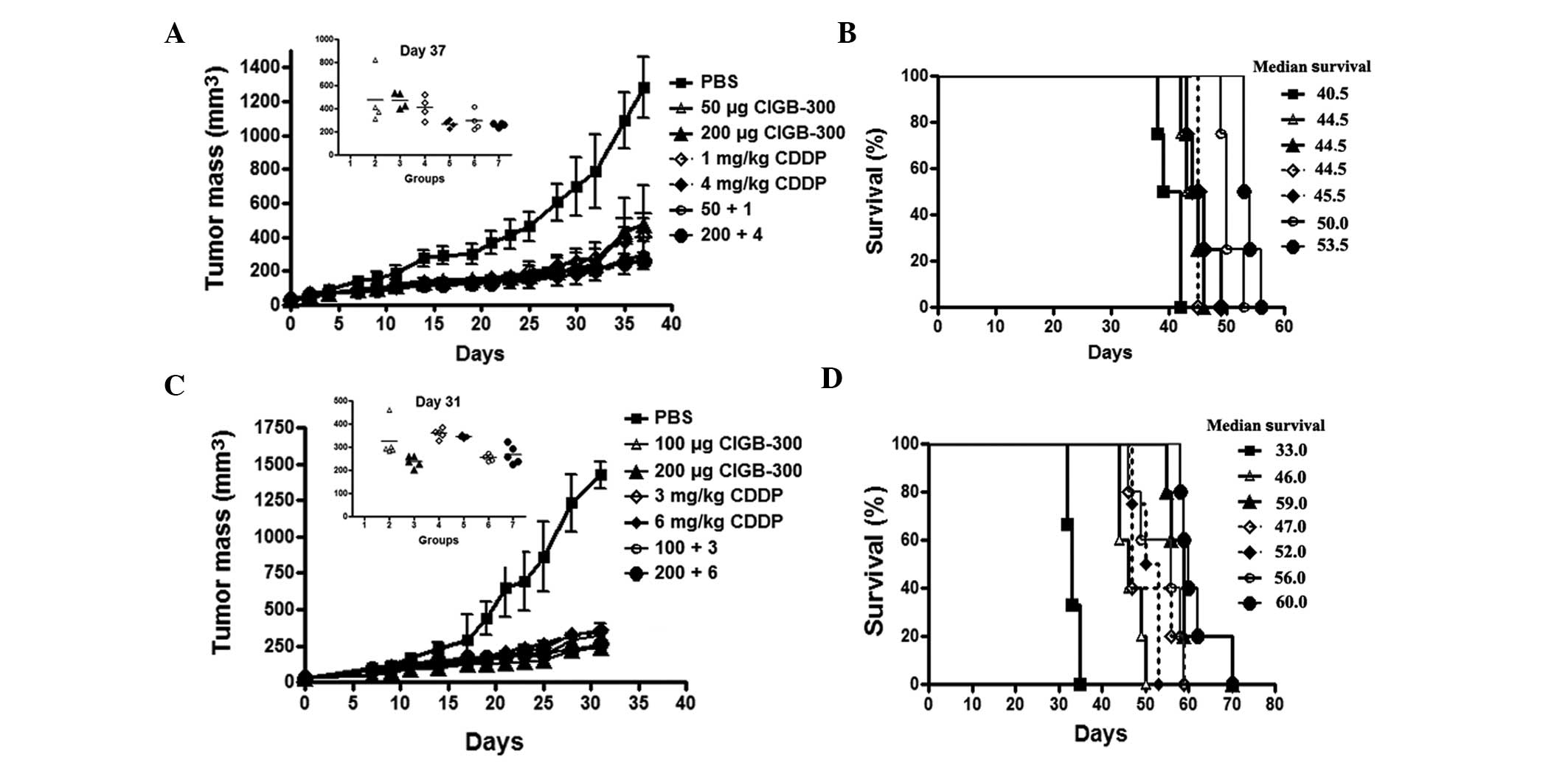|
1
|
Guerra B and Issinger OG: Protein kinase
CK2 in human diseases. Curr Med Chem. 15:1870–1886. 2008.
View Article : Google Scholar : PubMed/NCBI
|
|
2
|
Ruzzene M and Pinna LA: Addiction to
protein kinase CK2: a common denominator of diverse cancer cells?
Biochim Biophys Acta. 1804.499–504. 2010.PubMed/NCBI
|
|
3
|
Zandomeni R, Zandomeni MC, Shugar D and
Weinmann R: Casein kinase type II is involved in the inhibition by
5,6-dichloro-1-beta-D-ribofuranosylbenzimidazole of specific RNA
polymerase II transcription. J Biol Chem. 261:3414–3419.
1986.PubMed/NCBI
|
|
4
|
Szyszka R, Grankowski N, Felczak K and
Shugar D: Halogenated benzimidazoles and benzotriazoles as
selective inhibitors of protein kinases CK I and CK II from
Saccharomyces cerevisiae and other sources. Biochem Biophys
Res Commun. 208:418–424. 1995.PubMed/NCBI
|
|
5
|
Sarno S, Reddy H, Meggio F, et al:
Selectivity of 4,5,6,7-tetrabromobenzotriazole, an ATP
site-directed inhibitor of protein kinase CK2 (‘casein kinase-2’).
FEBS Lett. 496:44–48. 2001.
|
|
6
|
Pagano MA, Meggio F, Ruzzene M,
Andrzejewska M, Kazimierczuk Z and Pinna LA:
2-Dimethylamino-4,5,6,7-tetrabromo-1H-benzimidazole: a novel
powerful and selective inhibitor of protein kinase CK2. Biochem
Biophys Res Commun. 321:1040–1044. 2004. View Article : Google Scholar : PubMed/NCBI
|
|
7
|
Duncan JS, Gyenis L, Lenehan J, Bretner M,
Graves LM, Haystead TA and Litchfield DW: An unbiased evaluation of
CK2 inhibitors by chemoproteomics: characterization of inhibitor
effects on CK2 and identification of novel inhibitor targets. Mol
Cell Proteomics. 7:1077–1088. 2008. View Article : Google Scholar : PubMed/NCBI
|
|
8
|
Pagano MA, Bain J, Kazimierczuk Z, et al:
The selectivity of inhibitors of protein kinase CK2: an update.
Biochem J. 415:353–365. 2008. View Article : Google Scholar : PubMed/NCBI
|
|
9
|
Marschke RF, Andreopoulou E, Von Hoff DD,
Lim JK, Padgett CS and Northfelt DW: Phase I clinical trial of
CX-4945: A first-in-class orally administered small molecule
inhibitor of protein kinase CK2. Mol Cancer Ther. 8:C392009.
View Article : Google Scholar
|
|
10
|
Siddiqui-Jain A, Drygin D, Streiner N, et
al: CX-4945, an orally bioavailable selective inhibitor of protein
kinase CK2, inhibits prosurvival and angiogenic signaling and
exhibits antitumor efficacy. Cancer Res. 70:10288–10298. 2010.
View Article : Google Scholar
|
|
11
|
Perea SE, Reyes O, Puchades Y, et al:
Antitumor effect of a novel proapoptotic peptide that impairs the
phosphorylation by the protein kinase 2 (casein kinase 2). Cancer
Res. 64:7127–7129. 2004. View Article : Google Scholar : PubMed/NCBI
|
|
12
|
Perera Y, Farina HG, Gil J, et al:
Anticancer peptide CIGB-300 binds to nucleophosmin/B23, impairs its
CK2-mediated phosphorylation, and leads to apoptosis through its
nucleolar disassembly activity. Mol Cancer Ther. 8:1189–1196. 2009.
View Article : Google Scholar
|
|
13
|
Perera Y, Costales HC, Diaz Y, et al:
Sensitivity of tumor cells towards CIGB-300 anticancer peptide
relies on its nucleolar localization. J Pept Sci. 18:215–223. 2012.
View Article : Google Scholar : PubMed/NCBI
|
|
14
|
Meggio F and Pinna LA:
One-thousand-and-one substrates of protein kinase CK2? FASEB J.
17:349–368. 2003. View Article : Google Scholar : PubMed/NCBI
|
|
15
|
Rodriguez-Ulloa A, Ramos Y, Gil J, et al:
Proteomic profile regulated by the anticancer peptide CIGB-300 in
non-small cell lung cancer (NSCLC) cells. J Proteome Res.
9:5473–5483. 2010. View Article : Google Scholar : PubMed/NCBI
|
|
16
|
Farina HG, Benavent Acero F, Perera Y, et
al: CIGB-300, a proapoptotic peptide, inhibits angiogenesis in
vitro and in vivo. Exp Cell Res. 317:1677–1688. 2011. View Article : Google Scholar : PubMed/NCBI
|
|
17
|
Perera Y, Farina HG, Hernandez I, et al:
Systemic administration of a peptide that impairs the protein
kinase (CK2) phosphorylation reduces solid tumor growth in mice.
Int J Cancer. 122:57–62. 2008. View Article : Google Scholar : PubMed/NCBI
|
|
18
|
Perea SE, Reyes O, Baladron I, et al:
CIGB-300, a novel proapoptotic peptide that impairs the CK2
phosphorylation and exhibits anticancer properties both in vitro
and in vivo. Mol Cell Biochem. 316:163–167. 2008. View Article : Google Scholar : PubMed/NCBI
|
|
19
|
Solares AM, Santana A, Baladron I, et al:
Safety and preliminary efficacy data of a novel casein kinase 2
(CK2) peptide inhibitor administered intralesionally at four dose
levels in patients with cervical malignancies. BMC Cancer.
9:1462009. View Article : Google Scholar
|
|
20
|
Soriano-García JL, López-Díaz A,
Solares-Asteasuainzarra M, et al: Pharmacological and safety
evaluation of CIGB-300, a casein kinase 2 inhibitor peptide,
administered intralesionally to patients with cervical cancer stage
IB2/II. J Cancer Res Ther. 1:163–173. 2013.
|
|
21
|
Perea SE, Baladron I, Garcia Y, et al:
CIGB-300, a synthetic peptide-based drug that targets the CK2
phosphoaceptor domain. Translational and clinical research. Mol
Cell Biochem. 356:45–50. 2011. View Article : Google Scholar : PubMed/NCBI
|
|
22
|
Al-Lazikani B, Banerji U and Workman P:
Combinatorial drug therapy for cancer in the post-genomic era. Nat
Biotechnol. 30:679–692. 2012. View
Article : Google Scholar : PubMed/NCBI
|
|
23
|
Chou TC: Theoretical basis, experimental
design, and computerized simulation of synergism and antagonism in
drug combination studies. Pharmacol Rev. 58:621–681. 2006.
View Article : Google Scholar : PubMed/NCBI
|
|
24
|
Boyd M: The NCI In Vitro Anticancer Drug
Discovery Screen. Concept, Implementation, and Operation,
1985–1995. Anticancer Drug Development Guide: Preclinical
Screening, Clinical Trials, and Approval. Humana Press; Totowa, NJ,
USA: 1997
|
|
25
|
Chou TC and Hayball MP: CalcuSyn for
Windows: multiple-drug dose effect analyzer and manual. Biosoft;
Cambridge (UK): 1997
|
|
26
|
Kitano H: Cancer as a robust system:
implications for anticancer therapy. Nat Rev Cancer. 4:227–235.
2004. View
Article : Google Scholar : PubMed/NCBI
|
|
27
|
Dancey JE and Chen HX: Strategies for
optimizing combinations of molecularly targeted anticancer agents.
Nat Rev Drug Discov. 5:649–659. 2006. View
Article : Google Scholar : PubMed/NCBI
|
|
28
|
Marupudi NI, Han JE, Li KW, Renard VM,
Tyler BM and Brem H: Paclitaxel: a review of adverse toxicities and
novel delivery strategies. Expert Opin Drug Saf. 6:609–621. 2007.
View Article : Google Scholar : PubMed/NCBI
|
|
29
|
Gianni L, Kearns CM, Giani A, et al:
Nonlinear pharmacokinetics and metabolism of paclitaxel and its
pharmacokinetic/pharmacodynamic relationships in humans. J Clin
Oncol. 13:180–190. 1995.PubMed/NCBI
|
|
30
|
Andersson A, Fagerberg J, Lewensohn R and
Ehrsson H: Pharmacokinetics of cisplatin and its monohydrated
complex in humans. J Pharm Sci. 85:824–827. 1996. View Article : Google Scholar : PubMed/NCBI
|
|
31
|
Kuenen BC, Rosen L, Smit EF, et al:
Dose-finding and pharmacokinetic study of cisplatin, gemcitabine,
and SU5416 in patients with solid tumors. J Clin Oncol.
20:1657–1667. 2002. View Article : Google Scholar : PubMed/NCBI
|
|
32
|
Mayer LD and Janoff AS: Optimizing
combination chemotherapy by controlling drug ratios. Mol Interv.
7:216–223. 2007. View Article : Google Scholar : PubMed/NCBI
|
|
33
|
Ohga T, Uchiumi T, Makino Y, Koike K, Wada
M, Kuwano M and Kohno K: Direct involvement of the Y-box binding
protein YB-1 in genotoxic stress-induced activation of the human
multidrug resistance 1 gene. J Biol Chem. 273:5997–6000. 1998.
View Article : Google Scholar : PubMed/NCBI
|
|
34
|
Hennessy M and Spiers JP: A primer on the
mechanics of P-glycoprotein the multidrug transporter. Pharmacol
Res. 55:1–15. 2007. View Article : Google Scholar : PubMed/NCBI
|
|
35
|
Gaudreault I, Guay D and Lebel M: YB-1
promotes strand separation in vitro of duplex DNA containing either
mispaired bases or cisplatin modifications, exhibits
endonucleolytic activities and binds several DNA repair proteins.
Nucleic Acids Res. 32:316–327. 2004. View Article : Google Scholar
|
|
36
|
Skabkin MA, Evdokimova V, Thomas AA and
Ovchinnikov LP: The major messenger ribonucleoprotein particle
protein p50 (YB-1) promotes nucleic acid strand annealing. J Biol
Chem. 276:44841–44847. 2001. View Article : Google Scholar : PubMed/NCBI
|
|
37
|
Townsend DM and Tew KD: The role of
glutathione-S-transferase in anti-cancer drug resistance. Oncogene.
22:7369–7375. 2003. View Article : Google Scholar : PubMed/NCBI
|
|
38
|
Pinna LA: Protein Kinase CK2.
Wiley-Blackwell, . John Wiley & Sons, Inc; 2013, View Article : Google Scholar
|
|
39
|
Drygin D, Bliesath J, Ho C, et al:
CX-4945, a novel small molecule inhibitor of CK2 protein kinase,
reduces hyperactivated Akt signaling and synergizes with Akt
inhibitors in breast cancer cells. In: 21st AACR-NCI-EORTC
Symposium on Molecular Targets and Cancer Therapeutics; Boston, MA.
Mol Cancer Ther. 8. pp. C1982009, View Article : Google Scholar
|
|
40
|
Bliesath J, Huser N, Omori M, et al:
Combined inhibition of EGFR and CK2 augments the attenuation of
PI3K-Akt-mTOR signaling and the killing of cancer cells. Cancer
Lett. 322:113–118. 2012. View Article : Google Scholar : PubMed/NCBI
|
|
41
|
Siddiqui-Jain A, Bliesath J, Macalino D,
et al: CK2 inhibitor CX-4945 suppresses DNA repair response
triggered by DNA-targeted anticancer drugs and augments efficacy:
mechanistic rationale for drug combination therapy. Mol Cancer
Ther. 11:994–1005. 2012. View Article : Google Scholar
|
|
42
|
Siddiqui-Jain A, Streiner N, Bliesath J,
et al: CX-4945, an inhibitor of protein kinase CK2, potentiates the
antitumor activity of platinum chemotherapy in models of ovarian
cancer by preventing phosphorylation of XRCC1 and MDC1 and
disrupting DNA damage repair. Cancer Res. 71:54942011. View Article : Google Scholar
|















